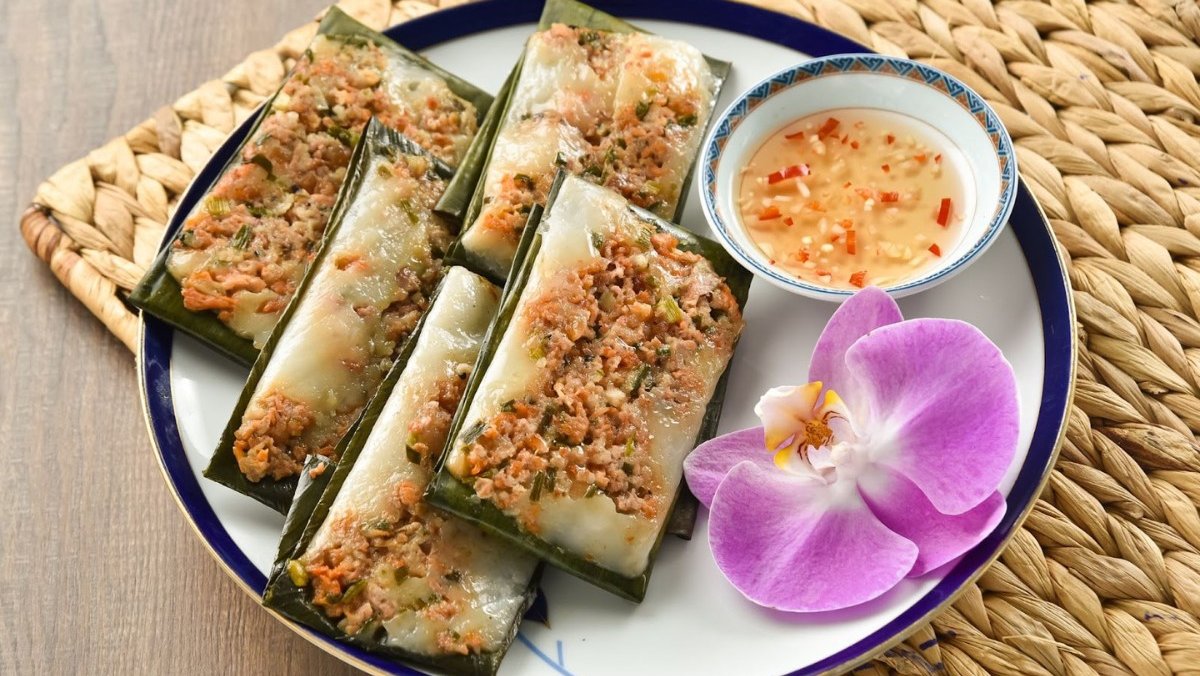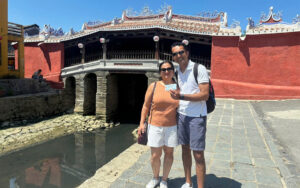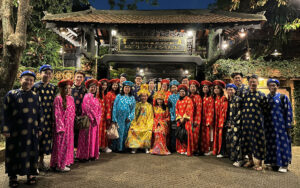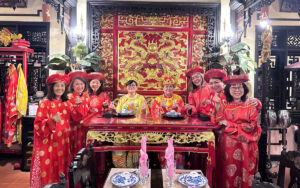Amidst the myriad of delectable treats, Banh Nam, a humble yet cherished delicacy, holds a special place in Hue’s culinary landscape. Often overshadowed by its more famous counterparts, this Flat Steamed Rice Dumpling is a ubiquitous street snack, offering a unique and delightful taste of the Ancient Capital’s flavors. Join us on a journey with Asia Legend Travel and uncover the full essence of Banh Nam, a hidden gem within Hue’s culinary treasures.
What is Banh Nam?
Banh Nam, a delicacy hailing from the culinary heritage of Hue city in central Vietnam, is a distinctive type of steamed flat Vietnamese rice dumpling. Characterized by its flattened cylindrical shape, this delicious dish is crafted from a mixture of rice flour, water, and turmeric, creating its unique yellow hue. The filling typically comprises seasoned minced shrimp or pork, providing a savory contrast to the tender rice casing.
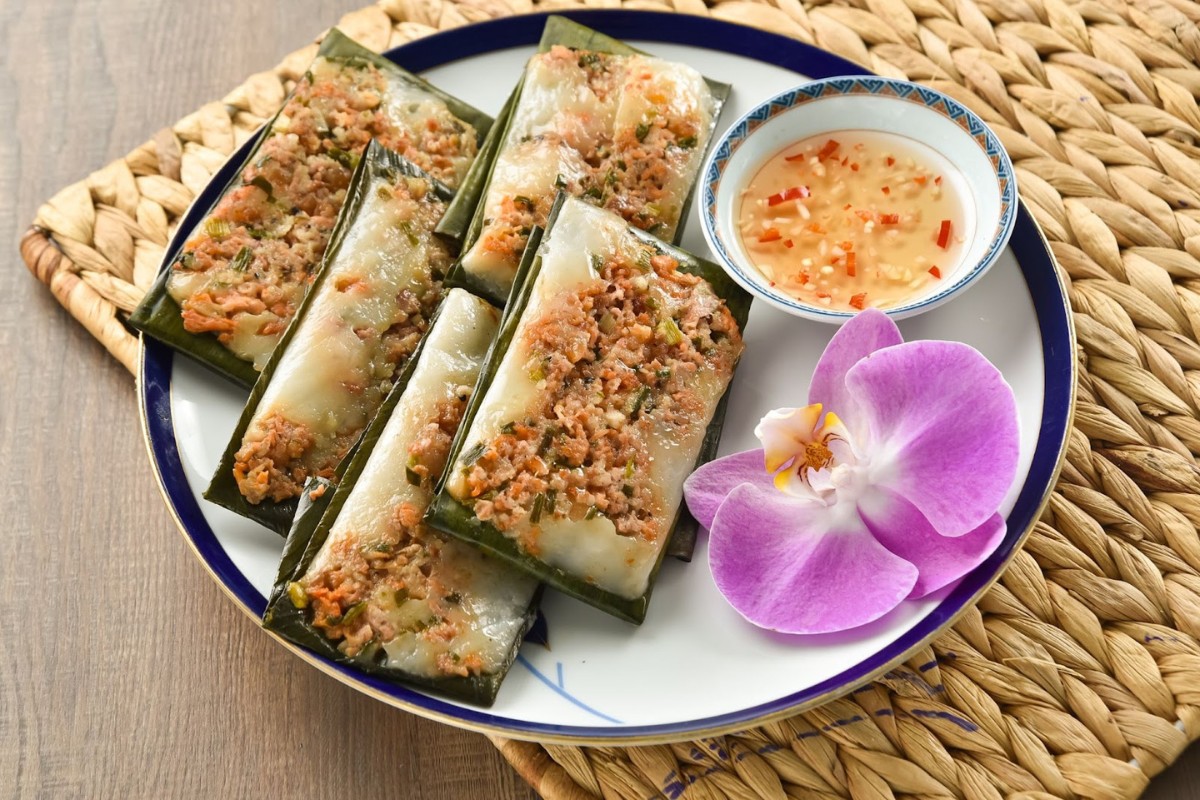
The preparation involves placing a layer of banana leaf at the bottom of a small, open-ended cylindrical bamboo tube, followed by the pouring of the rice flour mixture and the addition of the flavorful filling. After steaming, the banana leaf imparts a subtle fragrance to the dish, enhancing its overall appeal. This delicacy stands out not only for its delicious taste but also for its cultural significance in the gastronomic landscape of Hue.
Origin and history of Banh Nam
Banh Nam, a renowned rustic dish in Hue’s culinary repertoire alongside bánh bèo and bánh bột lọc, originates from the village of Nam Phổ, Phú Thượng commune, approximately 3 km from central Hue.
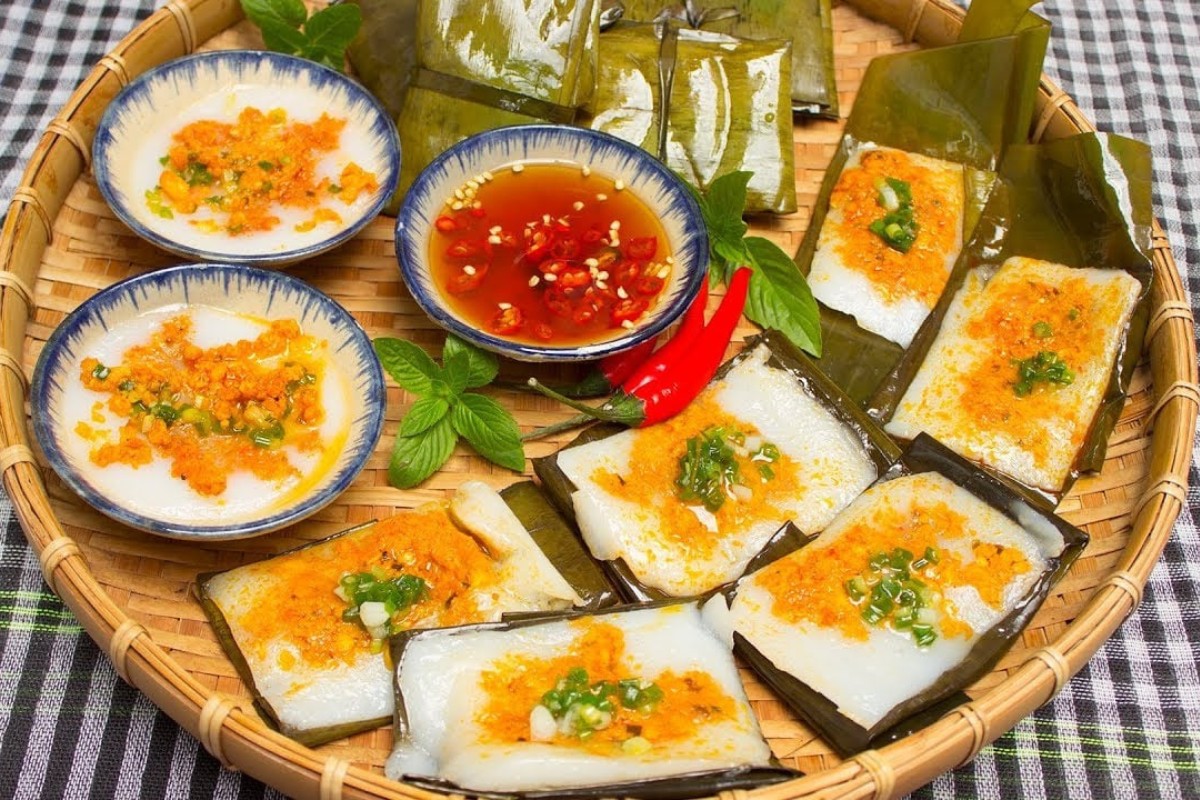
In the past, local women crafted this dish using rice flour, shrimp, and minced krill. Over time, the popularity of this unique dish grew in the village of Nam Phổ. With its delightful aroma, residents began trading and distributing the savory cakes along the streets, extending their reach to the imperial capital of Hue.
Ingredients and Preparation
To make delicious rice dumpling, you need the following ingredients and preparation steps.
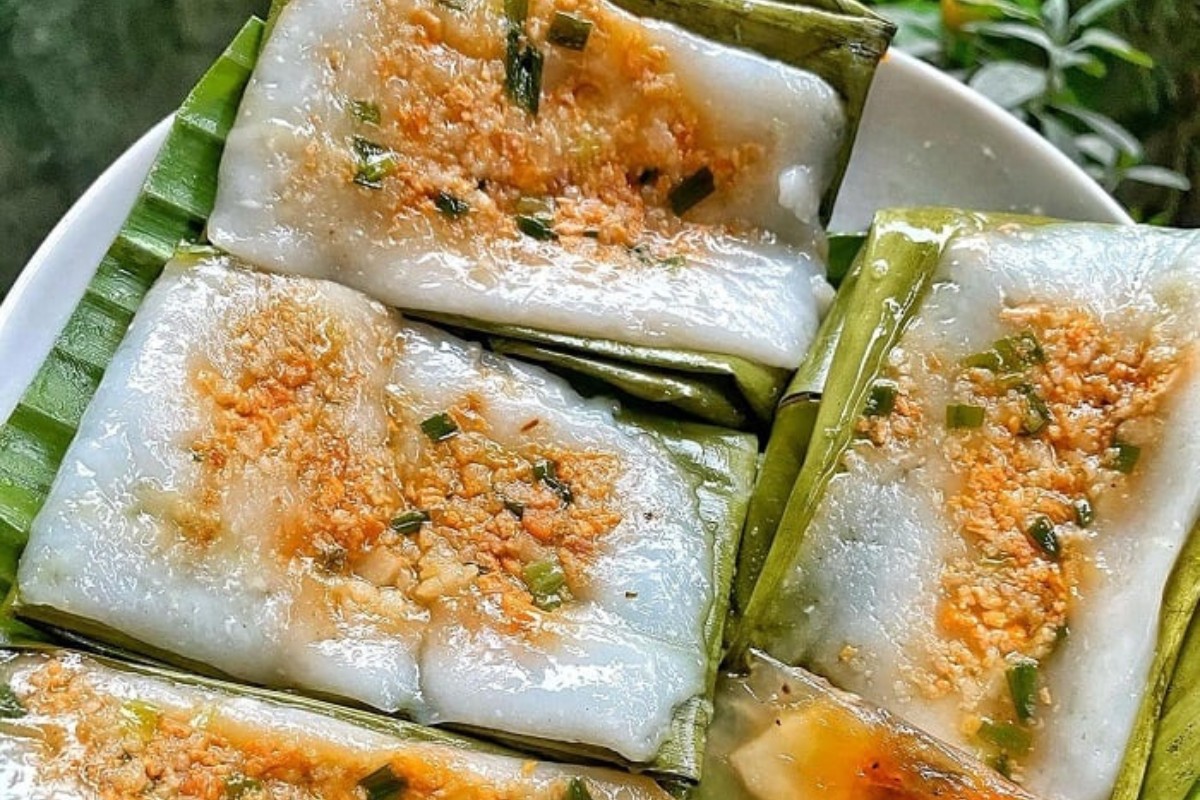
Key ingredients
The essential ingredients for making Banh Nam are simple, including rice flour, shrimp, pork, and banana leaves for the outer wrapping. However, achieving the perfect version of this specialty requires some expertise in selecting and preparing the rice flour.
Step-by-step preparation process
- Preparing the Rice Flour Mixture: Rice flour is dissolved in water and mixed with ingredients like cooking oil, MSG, and salt. The mixture is then heated over low flame, continuously stirred to prevent lumps or uneven texture. Once the mixture thickens, the heat is turned off, but stirring continues until the batter cools completely.
- Creating the Filling: The typical filling consists of minced shrimp and pork belly. After initial preparation, these ingredients are stir-fried with pepper, fish sauce, and other seasonings until well-cooked.
- Assembling the dumping: Banana leaves are prepared by lightly brushing them with oil. A thin layer of batter (about 1cm thick) is spread evenly in a rectangular shape on the leaves. The shrimp and pork filling are then evenly distributed along the length of the batter. Finally, the bánh is folded to form a rectangular shape.
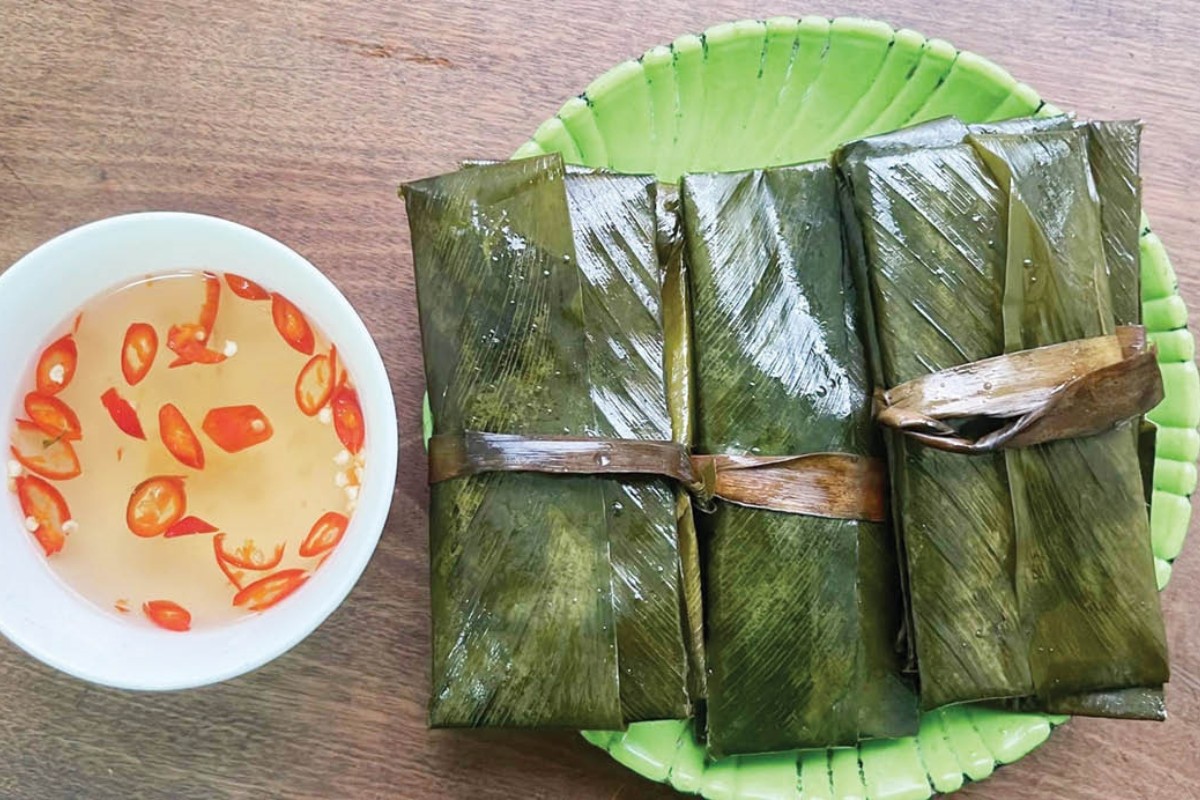
- Steaming the dumping: The assembled rice dumpling cake is steamed for approximately 20 minutes, preserving the green color of the banana leaves and ensuring a soft texture.
Presentation and How to eat Banh Nam
Indulging in Banh Nam is an art, and Hue people have two distinct ways to relish this delightful dish. Some prefer to peel the banana leaf and neatly arrange it on a plate, while others leave the dumping cakes atop the banana leaf to let its fragrant aroma enhance the overall taste. As each layer of the fresh green leaf is peeled away, a burst of enticing fragrance is released. The vibrant hues of the leaf, the pristine white of the rice flour, and the earthy color of the shrimp and meat filling create a visually pleasing harmony.
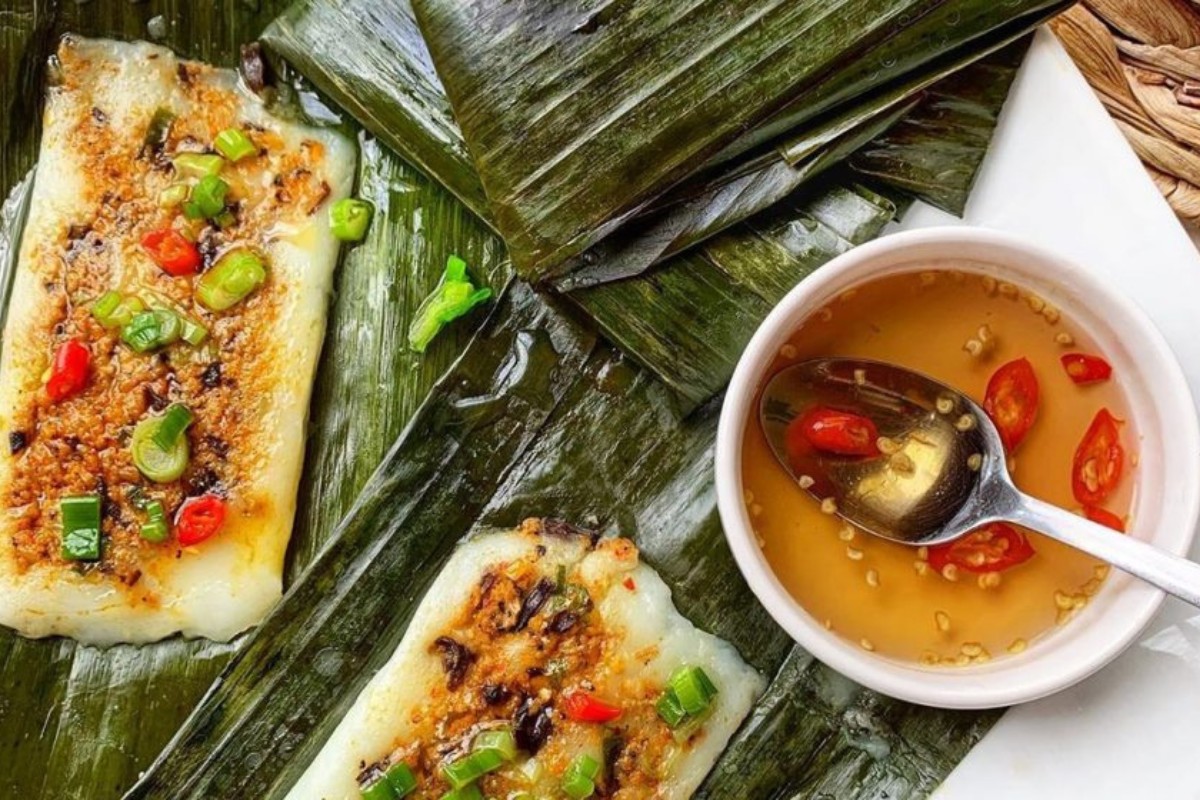
When savoring this delicacy, patrons drizzle a bit of fish sauce onto the surface and scoop a bite with a spoon. Slowly relish the soft yet not mushy texture, harmonizing with the richness of the shrimp, the aromatic scent of spring onions, the subtle spiciness of pepper, and the lingering fragrance of the banana leaf. Pairing it with other delicacies like grilled meatballs, pork sausage, or beef loaf elevates the experience, offering an irresistibly delicious symphony of flavors. Additionally, combining this dish with other Vietnamese treats, such as Banh Bot Loc and Banh Beo, enhances the dining adventure, creating an unforgettable medley of tastes that should not be overlooked.
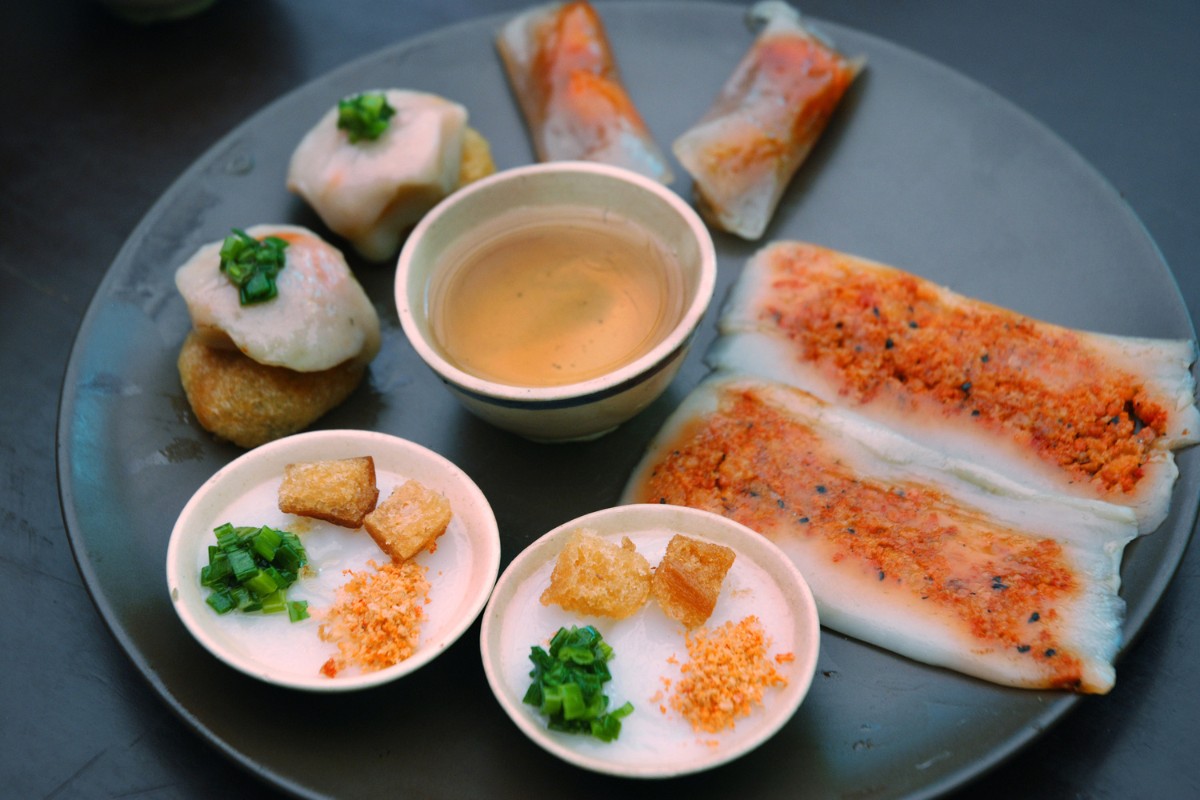
Different variations
Nowadays, this unique delicacy in Hue has evolved into diverse variations. One of substituting the traditional shrimp and meat filling with mung beans or mushrooms, creating a vegetarian version known as “Banh Nam Chay.” This special edition caters to those who follow a vegetarian diet or appreciate lighter fare. Additionally, people in Hue incorporate Banh Nam Chay into ceremonial offerings during important occasions like New Year’s Eve, full moon festivals, and the first day of the lunar month. This innovative twist on the classic version showcases the adaptability of this beloved dish to suit various preferences and occasions.
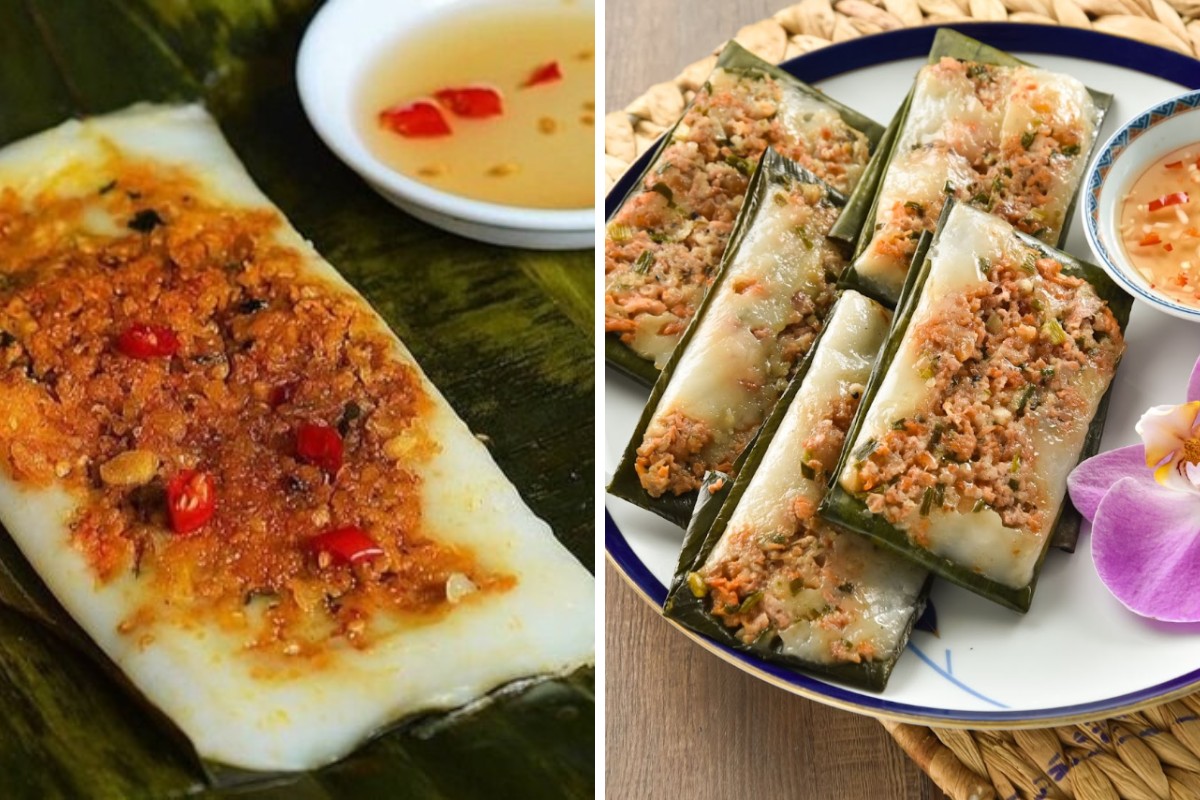
In the vibrant Hue’s culinary heritage, Banh Nam emerges as a culinary jewel alongside other traditional delights like Banh Loc, Banh Beo, Banh Khoai, etc. As you savor the flavors of Hue cuisine, this delectable specialty stands out with its delicious, fat-free taste, promising a delightful escape from culinary monotony. A visit to Hue would be incomplete without experiencing the allure of Banh Nam—a testament to the rich gastronomic legacy that continues to captivate and delight all who indulge in its distinct charm.
Tours related to Hue
-
View tourDestination: Da Nang, Halong Bay, Hanoi, Hoi An, Hue, Mekong Delta, Saigon / Ho Chi Minh City, Sapa
-
View tourDestination: Da Nang, Halong Bay, Hanoi, Hoi An, Hue, Mekong Delta, Saigon / Ho Chi Minh City
-
View tourDestination: Cat Ba Island, Hanoi, Hoa Binh, Hoi An, Hue, Mekong Delta, Saigon / Ho Chi Minh City
-
View tourDestination: Halong Bay, Hanoi, Hoi An, Hue, Mekong Delta, Ninh Binh, Saigon / Ho Chi Minh City
